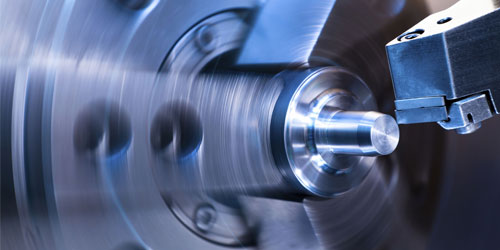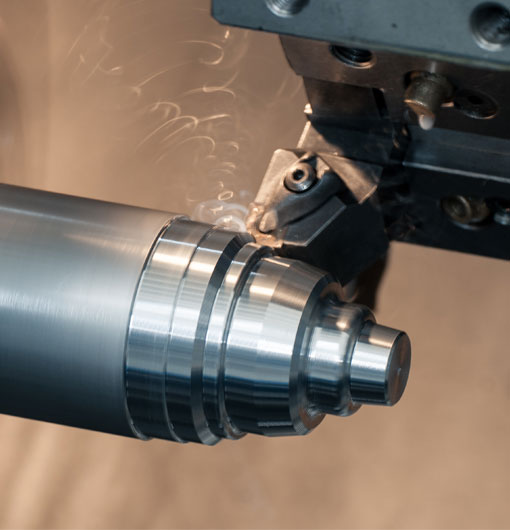Introduction
Computer Numerical Control (CNC) turning is a highly versatile and advanced manufacturing process that effectively creates precise, complex, and detailed parts using a variety of materials. This automated machining technology has revolutionized the manufacturing sector and streamlined production processes. One of the critical components of CNC turning is the axis, as it determines the rotation, movement, and overall machining capabilities of the system. This blog post will discuss the intricacies of CNC turning axes, their types, and their significance in the CNC turning landscape.
CNC Turning: A Brief Overview
CNC turning is a type of subtractive manufacturing process that utilizes a lathe or CNC turning machine to remove material from a workpiece and shape it into the desired form. The workpiece is loaded onto the machine, secured, and rotated around its axis at a specified speed while a cutting tool strategically removes the material. This process is ideal for producing cylindrically-shaped items, such as gears, pulleys, and other complexly designed workpieces.
The CNC Turning Axes
The CNC turning axes are the fundamental coordinates that define the motion of the CNC machine during the turning process. They play a crucial role in determining the accessibility and movements of the tools. Traditionally, lathes primarily had two axes: the X and Z axis. However, the introduction of more advanced CNC turning machines has led to the incorporation of additional axes, such as the Y, C, and B axis. These axes optimize machining capabilities and streamline the production process.
The X Axis
The X-axis, or the primary axis, refers to the horizontal motion of the cutting tool on a lathe parallel to the workpiece. The tool can move in both positive or negative directions along the axis, depending on the desired approach or cut.
The Z Axis
The Z-axis represents the longitudinal movement of the cutting tool, perpendicular to the X-axis. It moves along with the workpiece's length and enables the machining of various features, such as tapers and chamfers.
The Y Axis
Not all CNC turning machines possess a Y-axis – it is a feature available on more advanced machines. The Y-axis allows the cutting tool to move horizontally, perpendicular to both the X and Z axes. It offers enhanced flexibility and machining capabilities by enabling off-center machining and milling operations within the turning process.
The C Axis
The C-axis, also known as the spindle orientation, is a rotational component that allows the spindle and the workpiece to rotate simultaneously. With a CNC turning machine equipped with a C-axis, the operator can perform advanced and complex machining functions, such as drilling, tapping, and milling.
The B Axis
The B-axis is a supplementary rotational axis that enables the cutting tool to incline, further extending its range and reach. This extended reach allows for the generation of a larger variety of shapes and forms on a workpiece.
The Importance of Axes in CNC Turning
The versatility of a CNC turning machine is crucial in enhancing production capabilities while maintaining accuracy and precision. With the introduction of more axes, machinists can create more geometrically intricate workpieces with complex features. Additionally, the incorporation of multiple axes in the turning process allows for greater flexibility and reduced cycle times. This has led to increased efficiency and productivity in the manufacturing sector.
Choosing the Right CNC Turning Machine
The selection of a CNC turning machine should be based on the specific needs and requirements of the production process. This consideration should include the material to be machined, the complexity of the workpiece, and the desired level of precision. Generally, CNC turning machines with more axes provide greater versatility and capabilities. However, investing in a machine with unnecessary axes may increase costs unnecessarily.
The Future of CNC Turning
As CNC technology continues to evolve, CNC turning machines are becoming more advanced and sophisticated, allowing them to achieve higher accuracy, better surface finishes, and increased versatility. The constant advancements have led to the development of multi-axis machines, which combine CNC turning and milling features to create parts with complex geometries. Furthermore, the integration of robotics and automation in the manufacturing sector signifies an even greater potential for improving efficiency in CNC turning processes.
With the increasing demand for intricate and precise components in industries such as aerospace, medical, automotive, and more, the critical role of CNC turning axes in the production process is sure to remain a significant factor. These developments are set to continuously improve the accuracy, efficiency, and quality of CNC turned parts, ultimately contributing positively to the manufacturing industry's future.
cnc turning axis













